Fermented foods are healthy and delicious. They’re the original probiotics, with living bacteria that create enzymes and add vitamins. They also have a zingy flavor that’s addictive.
All ferments are pickled, but not all pickles are fermented. Most pickles you buy at the grocery store are “quick-pickled” with vinegar rather than naturally fermented. They don’t have the same health benefits or depth of flavor of the real thing.
Kraut-chi is a goofy word coined by Sandor Katz, author of The Art of Fermentation. It’s a hybrid of sauerkraut and kimchi, the German and Korean fermented vegetables. He applies the simple technique of sauerkraut with the bold flavor of kimchi to get the best of both worlds.
First, you’ll need some equipment. I use a wide-mouth jar with an airlock, especially in warmer weather, because it has a tight seal, prevents mold, and regulates pressure. You can find them at this Etsy shop. You can also use a crock with a lid or a plate with a weight on top.
You’ll also need a tamper (aka: vegetable stomper, cabbage crusher, kraut pounder) or dig through your kitchen drawers and make-do with something sturdy and long enough to pound vegetables in the bottom of the jar.
Once you’ve got all your supplies, the rest is easy, and you can use them to make other ferments, like pickled okra.
- 18 cups shredded collard greens, tough end-stems removed (reserve several large ones)
- 1 1/2 cups julienned carrots
- 1 cup sliced green onions
- 1 1/2 tablespoons grated ginger
- kochukaru (dried red pepper powder available at Asian markets, can substitute other red pepper powders, but taste-test for your heat preference)
- kosher salt
- Salt and kochukaru are added according to your taste preferences. Taste the kraut-chi a couple times as you make it and adjust the seasonings accordingly.
- Pack three cups of collards into the jar. Sprinkle with salt and kochukaru. Add a 1/4 cup of carrots, 1 tablespoon green onions, and 1/4 teaspoon grated ginger. Pound into the jar firmly until the collards begin to release some juice. Continue 5 more layers of the same ingredients, pounding each layer until enough juice is released to cover the vegetables. Taste and adjust for salt and heat. Once you reach the top of the jar, wedge some of the reserved stems of collards in the top, pushing the vegetables down so they are submerged under the juices. Top with a lid fitted with an airlock.
- Place in the coolest, darkest area you can find. Temperature and personal taste will determine when your kraut-chi is ready, anywhere from 3 days to a month. Sandor Katz recommends tasting them every few days.
- Cooler temperatures are better for fermentation. When it's hotter (above 78), fermentation can happen too fast and the vegetables will get mushy. Here is my solution for hot-weather fermentation: place the jar in an open cooler with an ice pack or two and cover with a dish towel. Switch out the ice packs for frozen ones each morning.
- Once the kraut-chi has fermented to your liking, switch out the airlock for a tight-fitting lid and move it to the refrigerator. It's not going to go bad because it already did.
- Thanks to Sandor Katz for allowing me to write about his fermentation techniques.
Sandor Katz’s website: wildfermentation.com

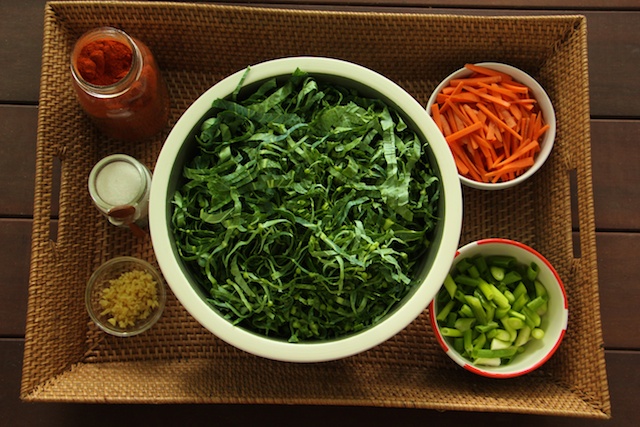

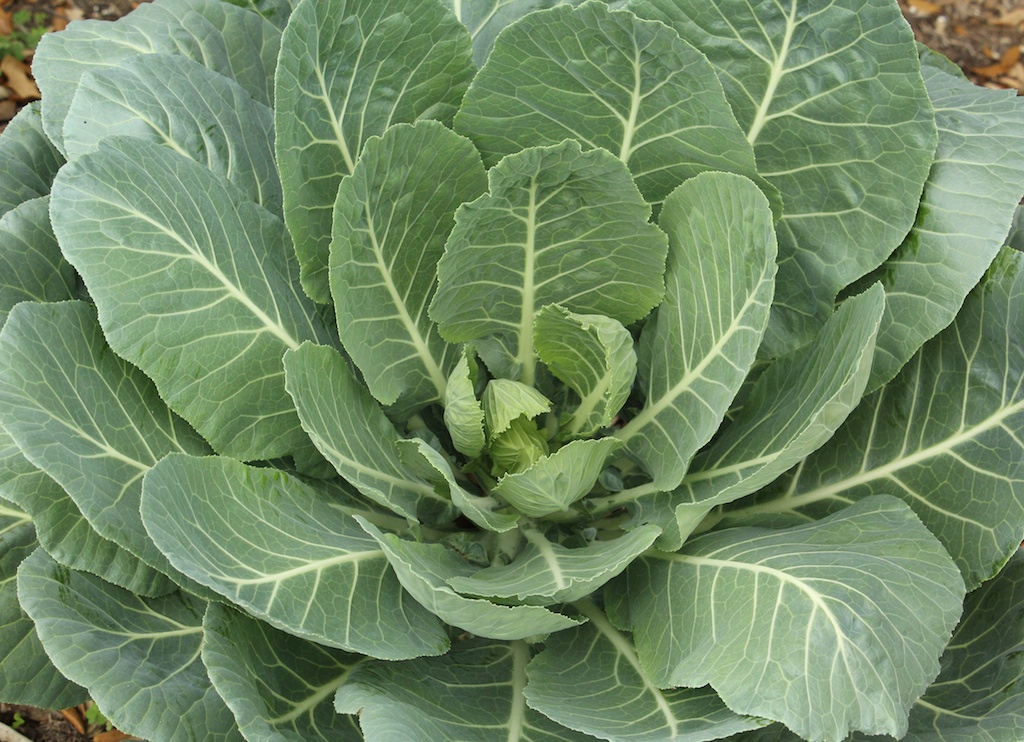
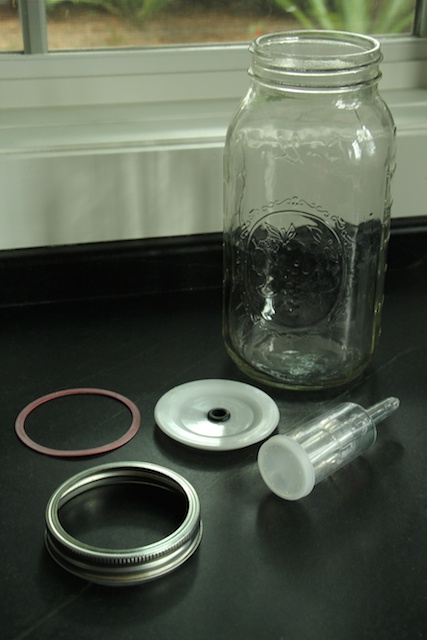
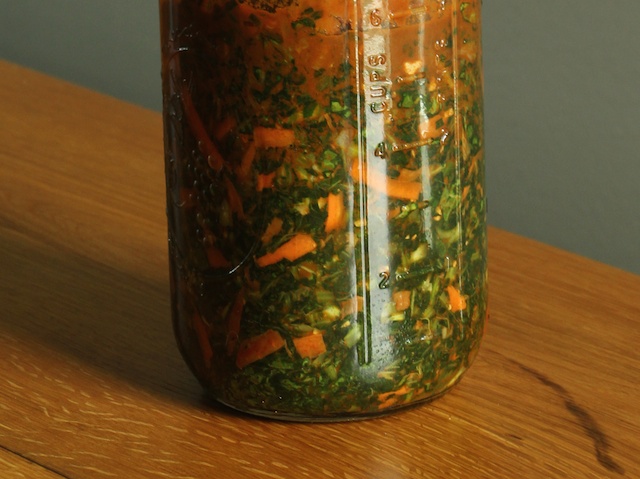
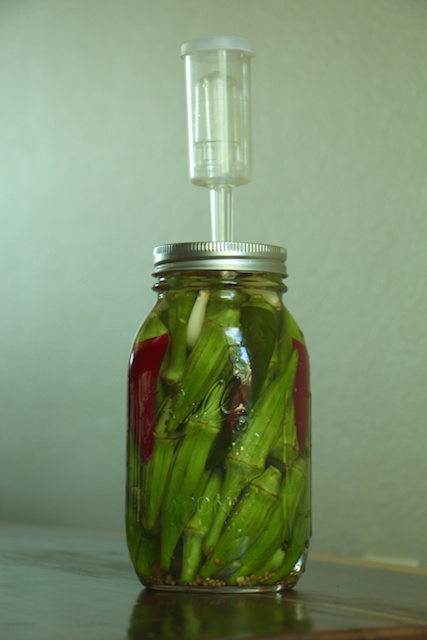
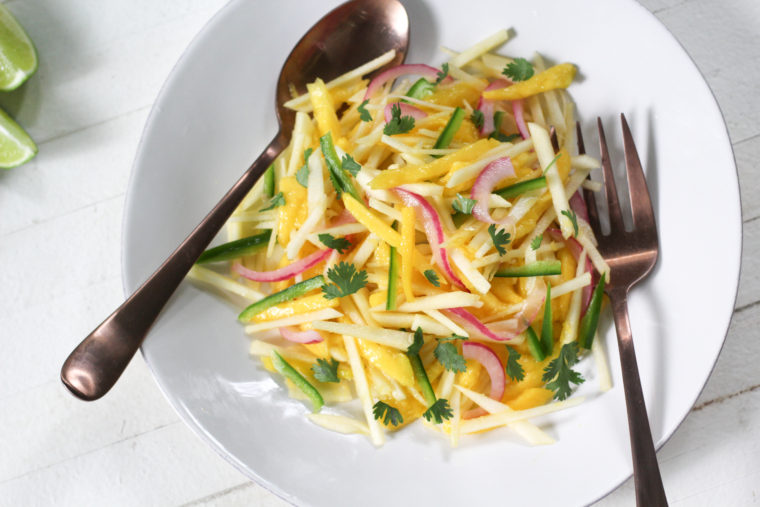
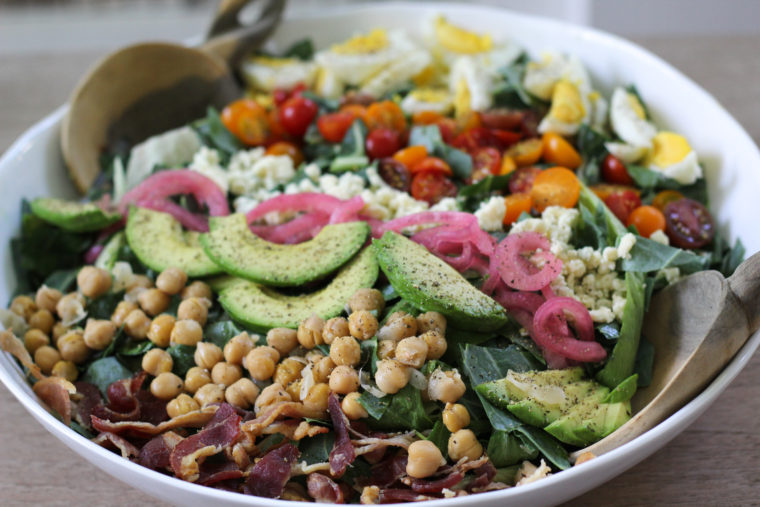
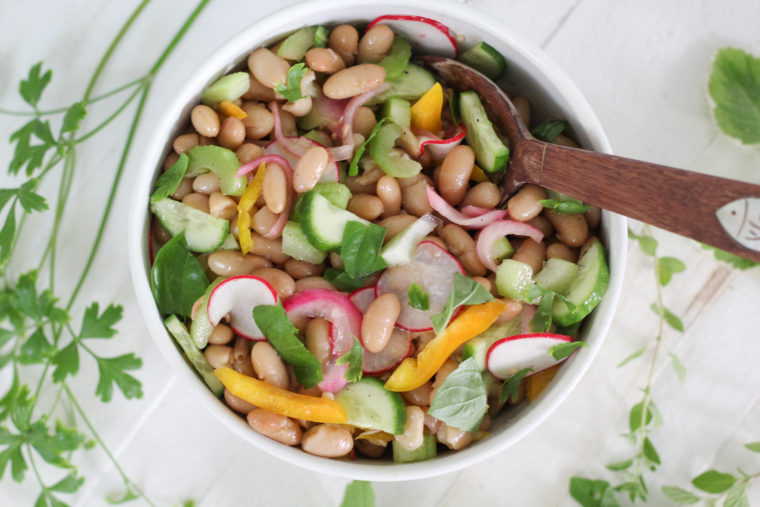
Thank you so much for this recipe. I made it and we all really enjoy it! I was very hesitant to give it a try but so glad I did!
WOW nice! My garden grew loads of collard greens this year and I wanted to do something different and you provided the answer.
Absolutely fabulous. . .
Thank you, Gina! I’m so glad you found a useful recipe here. I’ve definitely got you covered in the collard department! As you can see, they’re an obsession.